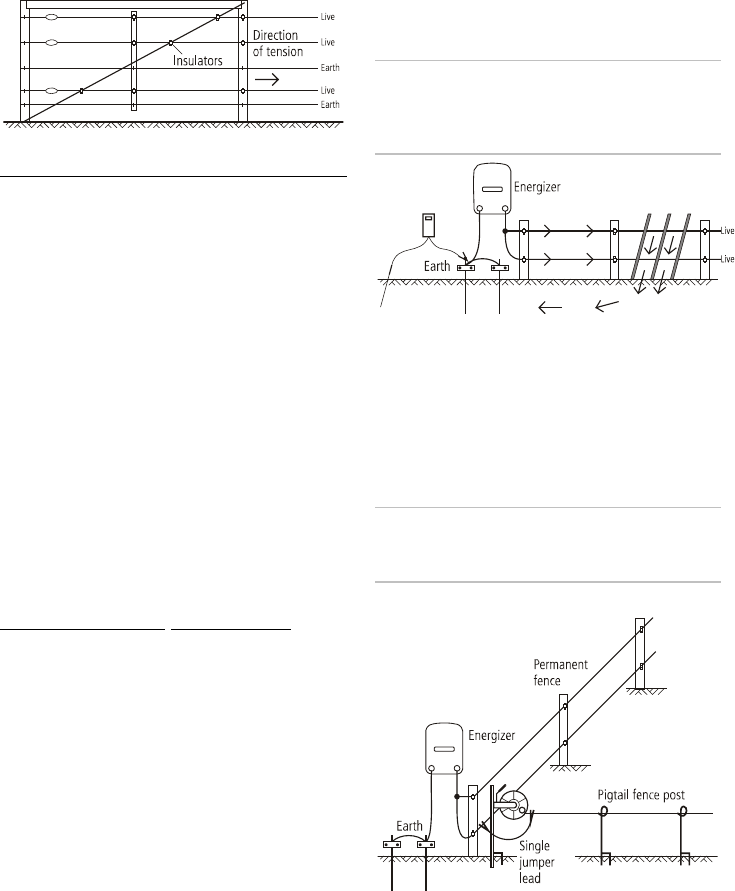
8
Horizontal stay
Suitable for field gate, high-tension strainer.
Very simple to erect and most suitable as a high tension
strainer, excellent in areas where the soil gets very wet or
where heavy frost occurs.
Installing and testing an earth system
Select a suitable site for the earth system. Sites need to
be:
• At least 10 m (33') from other earth systems (e.g.
telephone, mains power or the earth system of
another energizer).
• Away from stock or other traffic that could interfere
with the installation.
• At a site that can be easily observed for
maintenance.
• Ideally at a site that has damp soil (e.g. a shaded or
swampy location). Note that the earth does not
need to be directly adjacent to the energizer
installation.
Drive the required number of earth rods into the ground.
Use high-voltage, insulated cable and earth clamps to
continuously connect the earth rods and the energizer's
Fence earth terminal. Make sure the insulation is stripped
back to ensure good contact between the wire and the
earth rod. The table below specifies the minimum number
of 2 m (6'6") earth rods recommended for an earthing
system:
Energizer
Earth rods
1 J model 1
2 J model 2
3 J model 3
Test the earth system, using the following procedure:
1 Turn off the energizer.
2 At least 100 m (330') away from the energizer,
short circuit the fence by laying several steel rods or
lengths of pipe against the fence. For best results,
the fence voltage should be lowered to 2000 V or
less. In dry or sandy conditions, it may be necessary
to drive the rods up to 300 mm (12") into the earth.
Note:
It is not acceptable to short-circuit a fence
return system to the earth wire of the fence.
3 Turn the energizer back on.
4 Using a voltmeter, ensure that the fence voltage is
below 2 kV.
5
Check your earth system.
Insert the voltmeter's
earth probe into the ground at the full extent of the
lead, and clip the other lead to the last earth rod.
The voltmeter should not read more than 0.3 kV.
Anything higher than this indicates that better
earthing is required. Either add more earth rods or
find a better ground area to drive in the earth rods.
Note:
When earthing energizers located in dairies, earth
at least 20 m (65') away from the dairy using double-
insulated wire to avoid touching the dairy building or
equipment.
Temporary electric fencing
A temporary fence can be quickly erected and easily
moved allowing the farmer to:
• Make smaller paddocks (fields)
• Keep herds of animals separated
• Ration feed
Note:
Use more wires for smaller animals and wild
animals. Politape should be used when greater visibility is
required (e.g. horses).
An example of a temporary fence is shown below.














